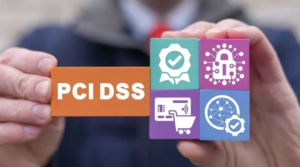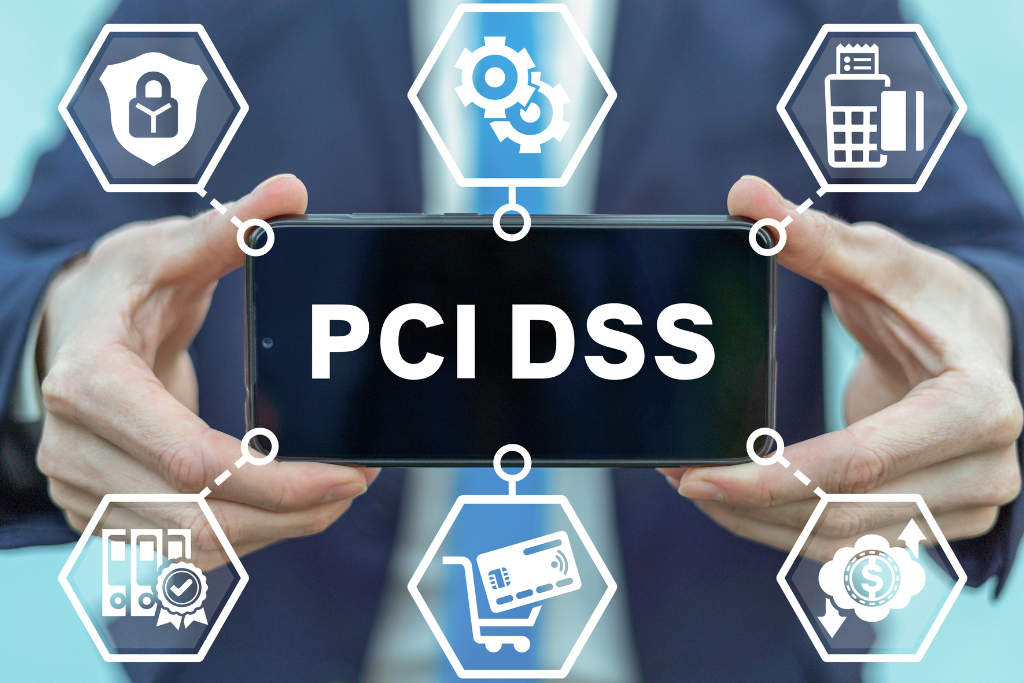Your business is thriving, customers are swiping their cards left and right, and the sales are rolling in. Life is good, right? But hold on a second—have you ever stopped to think about what happens behind the scenes every time someone swipes their card? If your answer is “I have no idea,” it’s time to get acquainted with PCI compliance. And trust me, you’ll want to pay attention, because nothing kills a thriving business faster than a data breach.Â
PCI Compliance: More Than Just Another AcronymÂ
Let’s start with the basics—what the heck is PCI compliance, anyway? PCI DSS (Payment Card Industry Data Security Standard) is a set of security standards designed to ensure that all companies that accept, process, store, or transmit credit card information maintain a secure environment. Think of it as the superhero cape that protects your customers’ payment card information from the evil clutches of cybercriminals.Â
Whether you’re running a cozy coffee shop or a sprawling online store, if you handle payment card data, PCI compliance is not just a suggestion—it’s a must. And ignoring it? Well, that’s like leaving your front door wide open with a sign that says, “Come on in, hackers!”Â
 Who Needs to Be PCI Compliant?Â
Who Needs to Be PCI Compliant?Â
Short answer: anyone who touches credit card information. This includes:Â
Retailers: Whether brick-and-mortar or e-commerce, if you’re processing payments, you’re in the PCI club.Â
Service Providers: If your business stores, processes, or transmits cardholder data on behalf of another company, you’ve got PCI responsibilities too.Â
Software Developers: Creating software that handles payment transactions? You better make sure your code is as secure as Fort Knox.Â
Third-Party Payment Processors: If you’re involved in facilitating credit card payments in any way, PCI compliance is your new best friend.Â
The Levels of PCI Compliance: Where Do You Fit In?Â
Here’s where things get a little more specific. PCI compliance isn’t a one-size-fits-all kind of deal—it comes in different levels, depending on the volume of transactions your business processes each year.Â
Level 1: For the big players—businesses that process over 6 million card transactions annually. You’ll need an annual on-site audit and a network scan by an approved vendor.Â
Level 2: If you process between 1 million and 6 million transactions a year, you’re here. You’ll need to complete a self-assessment questionnaire and a quarterly network scan.Â
Level 3: Processing 20,000 to 1 million e-commerce transactions annually? This is your level. Self-assessment and quarterly scans apply.Â
Level 4: For the small fry—fewer than 20,000 e-commerce transactions or up to 1 million transactions in total. Even here, you’ll need to complete a self-assessment and might be required to undergo a quarterly network scan.Â
 Why Should You Care About PCI Compliance?Â
Why Should You Care About PCI Compliance?Â
Let’s be real—keeping up with PCI compliance can feel like a chore, especially when you’ve got a million other things on your business to-do list. But here’s why it’s worth the effort:Â
Avoiding Fines: Non-compliance can result in hefty fines, ranging from $5,000 to $100,000 per month. Ouch! And trust us, your bottom line would much rather avoid that.Â
Building Trust: Customers are more likely to swipe their cards with confidence if they know you’re PCI compliant. It’s like putting a “We’ve Got Your Back” sign on your website.Â
Preventing Data Breaches: A breach can cost your business millions in lost revenue, not to mention the irreparable damage to your reputation. PCI compliance is your first line of defense.Â
Legal Protection: In the unfortunate event of a breach, being PCI compliant can help shield you from some of the legal consequences.Â
How to Get Started with PCI ComplianceÂ
Feeling overwhelmed? Don’t worry—you don’t need to tackle PCI compliance alone. Start by determining which PCI level your business falls under, then work through the specific requirements for that level. Here are a few steps to get you going:Â
Conduct a Vulnerability Scan: Regular scans by an approved scanning vendor will help you catch any potential weaknesses in your system.Â
Implement Strong Security Measures: This includes encrypting cardholder data, maintaining a secure network, and regularly monitoring and testing your systems.Â
Train Your Team: Make sure everyone who handles payment data understands the importance of PCI compliance and knows how to maintain it.Â
Final Swipe: Keep Your Business SecureÂ
In today’s world, where data breaches are as common as cat memes, PCI compliance is more important than ever. It’s not just about ticking a box; it’s about protecting your customers, your reputation, and your business’s future.Â
So, the next time you see those three little letters—PCI—don’t roll your eyes. Embrace them as the guardians of your business’s financial security. After all, keeping your customers’ data safe isn’t just good business—it’s the right thing to do. And hey, that’s something you can swipe right on! For further information, please click the button below to schedule a brief consultation with one of our experts.  Â









